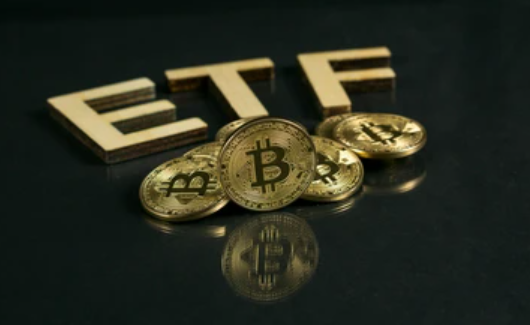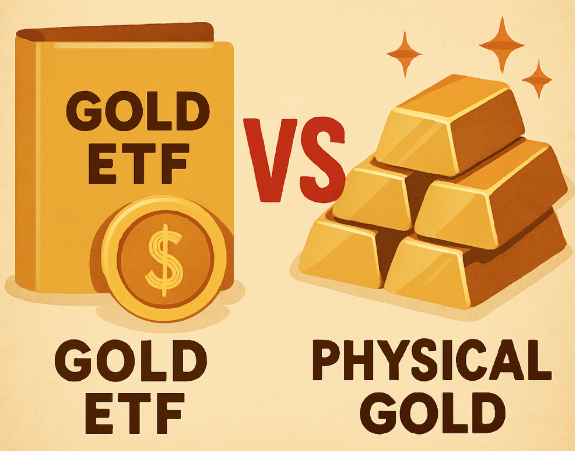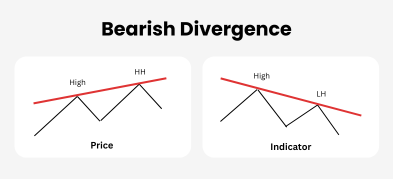Important Information
This website is managed by Ultima Markets’ international entities, and it’s important to emphasise that they are not subject to regulation by the FCA in the UK. Therefore, you must understand that you will not have the FCA’s protection when investing through this website – for example:
- You will not be guaranteed Negative Balance Protection
- You will not be protected by FCA’s leverage restrictions
- You will not have the right to settle disputes via the Financial Ombudsman Service (FOS)
- You will not be protected by Financial Services Compensation Scheme (FSCS)
- Any monies deposited will not be afforded the protection required under the FCA Client Assets Sourcebook. The level of protection for your funds will be determined by the regulations of the relevant local regulator.
Note: Ultima Markets is currently developing a dedicated website for UK clients and expects to onboard UK clients under FCA regulations in 2026.
If you would like to proceed and visit this website, you acknowledge and confirm the following:
- 1.The website is owned by Ultima Markets’ international entities and not by Ultima Markets UK Ltd, which is regulated by the FCA.
- 2.Ultima Markets Limited, or any of the Ultima Markets international entities, are neither based in the UK nor licensed by the FCA.
- 3.You are accessing the website at your own initiative and have not been solicited by Ultima Markets Limited in any way.
- 4.Investing through this website does not grant you the protections provided by the FCA.
- 5.Should you choose to invest through this website or with any of the international Ultima Markets entities, you will be subject to the rules and regulations of the relevant international regulatory authorities, not the FCA.
Ultima Markets wants to make it clear that we are duly licensed and authorised to offer the services and financial derivative products listed on our website. Individuals accessing this website and registering a trading account do so entirely of their own volition and without prior solicitation.
By confirming your decision to proceed with entering the website, you hereby affirm that this decision was solely initiated by you, and no solicitation has been made by any Ultima Markets entity.
I confirm my intention to proceed and enter this websiteWhat is a Gold ETF?
A Gold ETF (Exchange-Traded Fund) is a type of fund that tracks the price of gold and is traded on stock exchanges, just like individual stocks. These funds typically invest in physical gold bullion or gold futures contracts, providing investors with price exposure to gold without needing to store or insure it.
Unlike owning physical gold, a Gold ETF share represents a fraction of the total gold held by the fund. Some popular Gold ETFs include SPDR Gold Shares (GLD) and iShares Gold Trust (IAU).

How Does a Gold ETF Work?
A Gold ETF (Exchange-Traded Fund) works by allowing investors to gain exposure to the price of gold without having to physically buy, store, or insure gold bars or coins. These funds are traded on major stock exchanges, just like any stock, and are designed to closely track the spot price of gold.
Gold ETFs are backed by physical gold held in vaults by custodians such as HSBC or JPMorgan. Here’s how they function:
- Purchasing shares: Investors buy shares of the ETF through a brokerage account.
- Price tracking: The ETF’s share price generally mirrors the spot price of gold minus fund expenses.
- Liquidity: Because these ETFs are traded on major stock exchanges, they offer high liquidity—you can buy or sell anytime during market hours.
In most cases, each share of a Gold ETF corresponds to a fixed quantity of gold (e.g., 1/10th of an ounce).
Gold ETF Share Price: What Drives It?
The Gold ETF share price is primarily linked to the spot price of gold, as each ETF share typically represents a fractional ownership of physical gold held in vaults. However, beyond gold’s market price, several additional factors influence how ETF shares are priced in the market:
Market Demand for ETF Shares
Even though Gold ETFs aim to mirror the spot price of gold, the demand from investors on stock exchanges can create slight pricing differences, especially in the short term. If investor sentiment turns bullish on gold due to macro risks (e.g., war, inflation, banking instability), buying pressure can temporarily drive up ETF share prices even faster than the underlying metal.
Management Fees and Fund Expenses
Gold ETFs charge an expense ratio, often ranging from 0.10% to 0.40% annually. These fees are deducted from the fund’s net asset value (NAV), which slowly impacts the price over time. This means that even if the spot price of gold remains flat, the ETF share price may slightly decline due to ongoing operational costs.
Supply and Demand in the Physical Gold Market
Global gold supply, driven by mining output and central bank reserves, alongside demand from jewelry, technology, and investment sectors, also influences ETF values. If physical gold becomes scarce due to geopolitical shocks or central bank buying, spot prices rise and Gold ETF prices typically follow suit.
Monetary Policy and Inflation Expectations
Gold is traditionally viewed as a hedge against inflation and currency devaluation. When central banks adopt loose monetary policy (e.g., low interest rates or quantitative easing), investors often flock to gold as a store of value. This increased demand can significantly push up both physical gold prices and Gold ETF share prices.
Real-World Example:
In 2020, during the COVID-19 pandemic, investor fear surged, central banks slashed interest rates, and inflation expectations soared. This resulted in record inflows into gold ETFs like SPDR Gold Shares (GLD) driving its share price to all-time highs, tracking gold’s rise above $2,000 per ounce.
For example, during times of economic uncertainty, gold demand often increases, causing a rise in both physical gold prices and Gold ETF share prices.
How to Invest in Gold ETF
Investing in a Gold ETF is straightforward:
- Open a brokerage account with access to U.S. or local exchanges.
- Research and compare different Gold ETFs based on expense ratio, liquidity, and tracking method.
- Buy shares of your chosen ETF during market hours.
Most brokers today allow fractional investing, making Gold ETFs accessible to a wide range of retail investors.
Is Gold ETF Safe?
Gold ETFs are generally considered a safer and more transparent way to gain exposure to gold compared to speculative gold mining stocks or leveraged commodities products. However, while they eliminate the need for physical storage, they are not entirely risk-free.
- Market risk: As with any traded security, ETF prices can fluctuate based on gold’s market performance.
- Tracking error: Slight discrepancies can exist between the ETF’s price and actual gold prices.
- Counterparty risk: Although minimal, it exists if the custodian managing the gold holdings defaults.
That said, large ETFs like GLD are subject to regular audits, with detailed disclosures enhancing transparency and trust.
Yes, Gold ETFs are generally safe for most investors, especially when using large, established funds like GLD, IAU, or India’s Gold BeES. Their transparency, physical backing, and ease of trading make them suitable for both retail and institutional strategies.
Gold ETF Risk: What to Know Before Investing
Despite being a more convenient way to access gold, Gold ETFs are not risk-free. Common risks include:
- No physical possession: You don’t own gold directly.
- Management fees: Though typically low (~0.25% to 0.4%), they can erode returns over time.
- Volatility: Gold prices can fluctuate based on macroeconomic factors like interest rates, inflation, and geopolitical tensions.
From a trader’s perspective, Gold ETFs are best used as hedging instruments or short-to-mid-term speculative tools, not as a full replacement for physical gold in long-term wealth preservation.
Can Gold ETF Be Converted to Physical Gold?
In most cases, retail investors cannot directly convert Gold ETF shares into physical gold. Only authorized participants, typically large financial institutions can redeem large blocks of ETF shares (usually in 100,000-share lots) for physical gold.
However, some ETFs or gold-linked platforms do offer limited convertibility services for high-net-worth individuals, often with added fees and logistical challenges.

Gold ETF vs Physical Gold: Key Differences
For short- to mid-term strategies, Gold ETFs provide unmatched liquidity and flexibility, while physical gold is preferred for portfolio diversification and inflation hedging over decades.
| Feature | Gold ETF | Physical Gold |
| Ownership | Indirect (via fund shares) | Direct (bars, coins, etc) |
| Storage & Insurance | Handled by custodian | Investor’s responsibility |
| Liquidity | High (can sell anytime) | Lower (depends on market) |
| Convertibility | Limited | Fully convertible |
| Costs | Low fees, but on-going | High upfront (premium, storage) |
| Ideal for | Traders, investors seeking access | Long-term holders, wealth safety |
When deciding between a Gold ETF and physical gold, the choice depends on your investment goals, risk tolerance, and time horizon. Gold ETFs offer high liquidity, ease of trading, and low transaction costs, making them ideal for short- to medium-term investors or traders who want exposure to gold prices without dealing with storage or security. In contrast, physical gold such as coins or bullion, provides tangible ownership and can act as a long-term store of value outside the financial system, especially during economic crises. However, it comes with higher upfront costs, insurance, and storage requirements.
While Gold ETFs are excellent for portfolio diversification and active trading, physical gold remains a preferred option for wealth preservation and inflation hedging over decades. Both have their merits, and combining them can offer a balanced approach to gold investing.
Should You Invest in Gold ETFs?
Gold ETFs offer a cost-effective, transparent, and flexible way to gain exposure to gold. While they don’t replace the tangible benefits of owning physical gold, they are ideal for active traders and investors looking for short- to medium-term exposure to gold prices without the hassle of storage.
For those seeking a secure and efficient trading platform to invest in Gold ETFs and other gold-related assets, Ultima Markets offers competitive pricing, low latency execution, and access to global ETF products.
Disclaimer: This content is provided for informational purposes only and does not constitute, and should not be construed as, financial, investment, or other professional advice. No statement or opinion contained here in should be considered a recommendation by Ultima Markets or the author regarding any specific investment product, strategy, or transaction. Readers are advised not to rely solely on this material when making investment decisions and should seek independent advice where appropriate.












